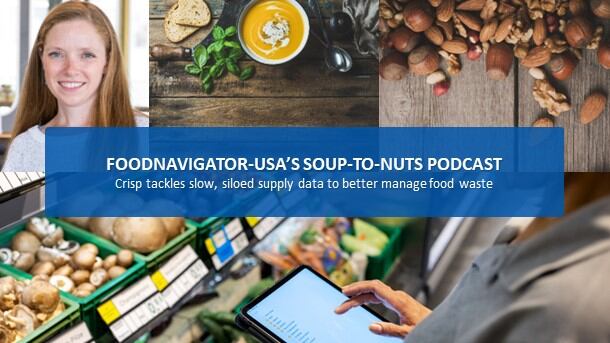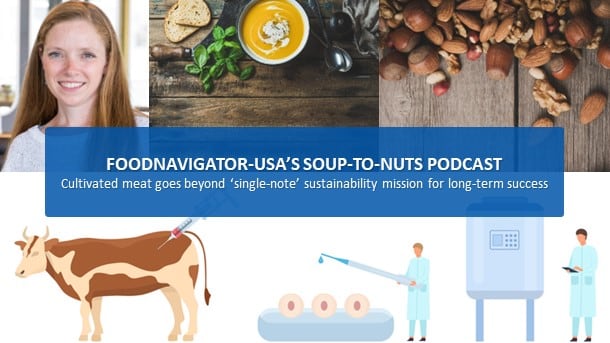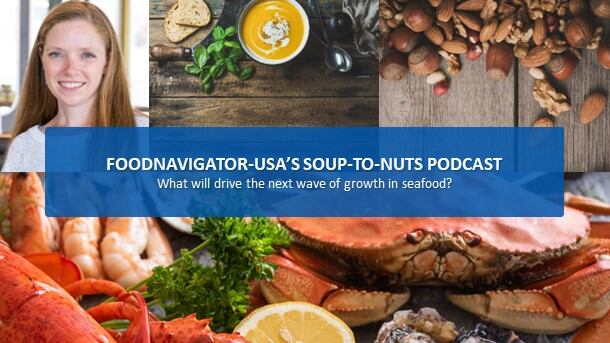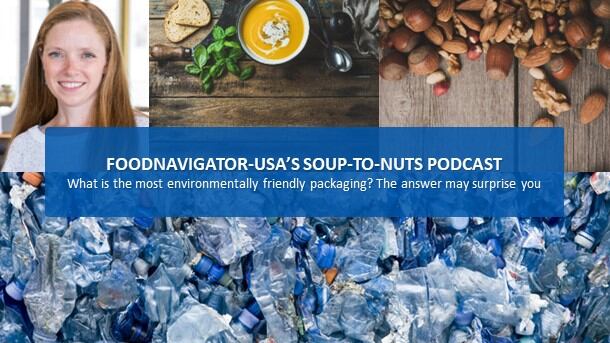According to retail analytics software firm Crisp, siloed, slow-moving and inaccurate or inaccessible data about how much of a product consumers will want at a specific time and place has led to a “just in case” mentality in which players up and down the value chain overestimate need to hedge against potential shortfalls.
At any given point in the supply chain, individual “rounding errors” may be miniscule but taken as a whole they can snowball to an overestimation upwards of 40%, which Crisp executive vice president of partnerships Len Ostroff explains leads to waste and higher costs that squeeze companies’ margins. He adds that while too much inventory is undesirable, so too is the risk of too little – or the wrong amount in the wrong place.
In this episode of FoodNavigator-USA’s Soup-To-Nuts podcast, Ostroff explains how Crisp’s platform helps to right this imbalance – and in doing so reduce food waste and boost companies’ bottom lines – by gathering and standardizing real-time data from multiple retailers and providing it to CPG companies in an easy-to-use format that can influence purchasing, production and distribution decisions. The end result, he says, is two better bottom lines: less waste and less lost sales due to out-of-stocks, which both translate to higher profits.
[Editor’s note: Never miss an episode of FoodNavigator-USA’s Soup-To-Nuts Podcast – subscribe today.]
Technology’s hidden role in food waste
According to Ostroff, the inspiration for Crisp came to founder Are Traasdahl when witnessed food waste while traveling with his family, and he realized the hidden role that data and technology play in the problem and could play in the solution.
“Crisp was founded on the mission to reduce food waste,” and Traasdahl’s discovery that “the flow of data or the intelligence to be able to make more a more resilient and efficient supply chain just wasn’t there – that data has been historically locked up in retailer silos,” he explained.
He added that while retailers often share data with manufacturers, that data isn’t standardized and can be difficult to sort through in a timely fashion
Ostroff added the impact of inaccurate or delayed data on food waste is magnified as it moves across the supply chain through what is known as the “bullwhip effect,” which can cause a relatively small error of plus or minus 5% to snowball into an error upwards of 40%.
As Ostroff noted, the bullwhip effect has become even more powerful since the pandemic began when many in the food and beverage industry transitioned from a “just in time” approach to inventory to a “just in case” approach that gave them extra cushion to avoid out of stocks if future deliveries were delayed.
But as illustrated by rising costs and persistent food waste, neither solution is perfect, which is where Ostroff says Crisp comes in.
“We believe that better and easier access to reliable, high-quality data will enable all participants in the retail ecosystem to become more efficient. And by more efficient, that means they’re producing the appropriate amount of product to satisfy demand, but not over producing. They’re also not underproducing so that there are out-of-stock. And it impossible to make these sorts of data driven decisions without having the data available in a clean, ready and real-time basis,” he said.
Crisp provides this by gathering data from “inbound connectors,” or retail data sources, that are paired with “outbound connectors,” or the tools CPG manufacturers use and formatted in a way that manufacturers can use – not matter their data mining and analysis skill level.
For lean companies that cannot afford a full-time data scientist to crunch numbers, Crisp offers different levels of engagement with everything from pre-made dashboards that allow a hands-off view of business to detailed data that companies can use to create their own pivot tables.
The data includes everything a brand needs to know about their sales, distribution, incoming supply, upcoming expiration dates and opportunities for promotions to boost sales before food goes bad – plus more, according to Ostroff.
Illy coffee: A case study
The benefits that Crisp offers go beyond food waste reduction to more broadly support brands’ relationships with retailers, drive sales, strategically increase distribution and quickly identify problems in real time before they can have significant negative impact.
For example, when the iconic Italina coffee brand Illy expanded into the US several years ago it used Crisp to track inventory levels, identify consumption patterns and identify opportunities to increase order volumes.
“Once they started using Crisp, they saw a 10% increase in sales because they were able to communicate better what their requirements were from the distributor and understand where the opportunities were,” Ostroff said.
Companies interested in learning more about Crisp can visit gocrisp.com and sign up for what Ostroff called a “proof of value” trial for 30 days, during which they can access the platform and determine if they want to subscribe.




